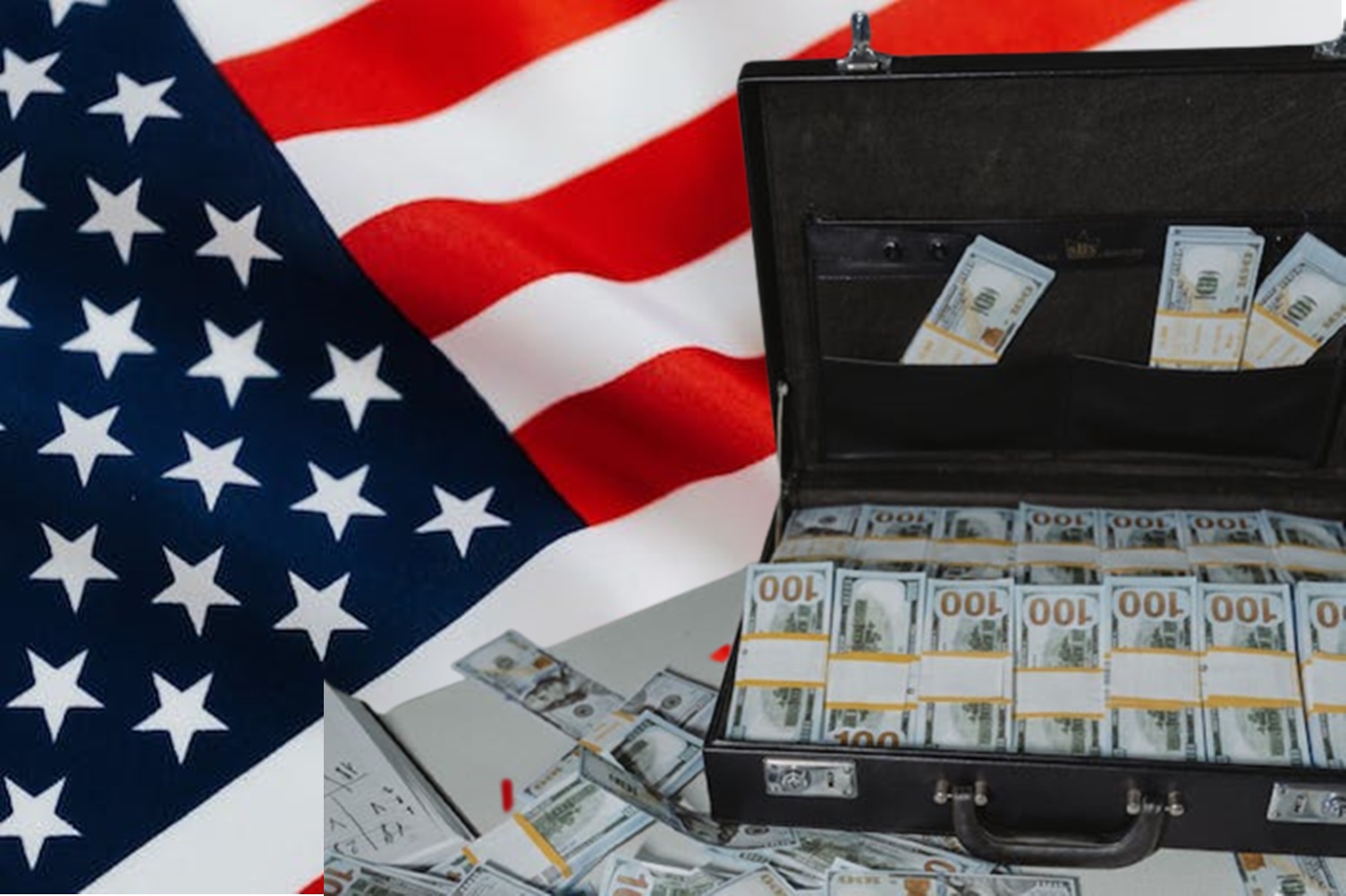Biden Student Loan Debt Relief: In today’s fast-paced educational landscape, the topic of student loan debt relief is more pertinent than ever.
With President Biden’s recent initiatives, understanding the nuances of these changes is crucial for students, graduates, and families nationwide.
This comprehensive guide aims to provide an in-depth look at the Biden administration’s approach to student loan debt relief, its implications, and how it can benefit you.
Background on Student Loan Debt in America
Understanding the landscape of student loan debt in America is pivotal for grasping the challenges faced by millions of borrowers. This background provides a comprehensive overview, focusing on the latest statistics, the historical evolution of loan policies, and the profound impact this debt has on individuals and the wider economy.
Statistics on Student Loan Debt in the U.S.
In recent years, student loan debt in the United States has reached unprecedented levels. Current statistics reveal that:
- The total amount of student loan debt has surpassed a staggering figure, impacting a significant percentage of the adult population.
- The average debt per borrower presents a clear picture of the financial burden on graduates.
- Insights into the demographics of borrowers, including age, income level, and educational attainment, offer a deeper understanding of who is most affected.
These statistics are not just numbers; they reflect the real-life financial challenges of millions of Americans.
Historical Context of Student Loan Policies
To fully comprehend the current state of student loan debt, it’s crucial to look back at its roots:
- The genesis of federal student loan programs and their initial objectives.
- Key legislative changes over the decades that have shaped the current landscape.
- The role of private lenders and the evolution of their involvement in student financing.
This historical perspective is vital for understanding how past decisions have led to present challenges.
The Impact of Student Debt on Borrowers and the Economy
The repercussions of student loan debt extend far beyond individual borrowers:
- On a personal level, the burden of debt affects life choices, such as homeownership, career paths, and family planning.
- Economically, the ripple effects are felt in consumer spending, savings rates, and broader economic mobility.
- The mental and emotional toll on borrowers, often overlooked, is a significant aspect of this crisis.
However, student loan debt in America is a complex issue with far-reaching implications. By examining the statistics, understanding the historical context, and acknowledging the impact on individuals and the economy, a clearer picture emerges of this critical challenge facing our society.
Overview of Biden’s Student Loan Debt Relief Plan
In a landmark move, President Joe Biden’s administration has introduced a comprehensive Student Loan Debt Relief Plan, aiming to alleviate the financial burden on millions of Americans. This initiative reflects the government’s commitment to supporting higher education while acknowledging the economic challenges faced by borrowers.
Key Features of Biden’s Debt Relief Initiatives
The plan is characterized by several pivotal features:
Debt Forgiveness: A significant portion of student loan debt will be forgiven for eligible borrowers. This is aimed at reducing the financial strain on recent graduates and long-term borrowers.
Income-Driven Repayment Plans: The plan proposes more manageable repayment schemes based on the borrower’s income, ensuring that repayments do not become a financial hindrance.
Interest Rate Reductions: Efforts are being made to lower interest rates on existing student loans, making them more affordable in the long term.
Public Service Loan Forgiveness: Enhancements to this program are proposed, offering more opportunities for borrowers engaged in public service to have their loans forgiven.
Legislative and Executive Actions Taken
The Biden administration has employed a combination of legislative and executive actions to implement this plan:
Executive Orders: President Biden has used executive orders to expedite certain aspects of the plan, particularly those regarding debt forgiveness and repayment terms.
Legislative Proposals: The administration is also working with Congress to pass legislation that supports long-term changes in student loan policies, including interest rate adjustments and enhanced loan forgiveness programs.
Eligibility Criteria for Relief under Biden’s Plan
To benefit from this plan, borrowers must meet specific criteria:
Income Thresholds: The plan primarily targets individuals and families with certain income levels, focusing on providing relief to low and middle-income borrowers.
Loan Types: Only specific types of student loans, particularly federal student loans, are eligible under this plan.
Employment Status: Certain aspects of the plan, like the Public Service Loan Forgiveness, require the borrower to be employed in specific sectors.
Repayment History: Borrowers with a consistent history of repayments may be prioritized for certain benefits under the plan.
President Biden’s Student Loan Debt Relief Plan is a significant step towards addressing the growing concern of student debt in the United States. By focusing on forgiveness, manageable repayments, and interest rate reductions, the plan is poised to provide substantial relief to millions of Americans, thereby supporting their financial stability and educational aspirations.
Impact on Borrowers: Understanding the Effects of the Relief Plan
The Personal Touch: How the Relief Plan Affects Individual Borrowers
The relief plan is more than just a policy; it’s a lifeline for many individuals struggling with financial burdens. This section delves into personal stories and case studies, highlighting the real-world impact of the relief plan on individual borrowers. By focusing on diverse experiences, we bring to light the varied ways in which this plan provides much-needed support.
From Testimonies to Transformation: Case Studies and Personal Stories
We explore a range of personal stories and case studies, each one a testament to the transformative power of the relief plan. These narratives offer a glimpse into the lives of borrowers before and after receiving aid, showcasing the plan’s role in alleviating financial stress. The stories serve as powerful examples of resilience and the positive changes brought about by the plan.
Looking Ahead: Long-Term Benefits for Recipients
The long-term benefits of the relief plan extend beyond immediate financial relief. This section examines how the plan contributes to the overall well-being and future prospects of recipients. From improved credit scores to enhanced financial stability, we explore the broader implications of the plan, illustrating its role in fostering a more secure financial future for beneficiaries.
By combining personal narratives with a look at the long-term benefits, this section paints a comprehensive picture of the relief plan’s impact on borrowers, emphasizing its significance in the broader context of financial well-being and stability.
Public and Political Reaction to Student Loan Debt Relief
Public Opinion on Student Loan Debt Relief
Understanding public sentiment towards student loan debt relief is crucial, as it reflects the collective voice of those directly affected and the general populace. Surveys and polls often reveal a spectrum of opinions, ranging from strong support to staunch opposition. Supporters typically view loan forgiveness as a necessary step in addressing the financial burdens faced by millions of Americans, arguing that it would stimulate economic growth and alleviate long-term debt struggles. On the other hand, opponents raise concerns about fairness, especially towards those who have already paid off their loans or chose not to pursue higher education due to its cost.
Responses from Different Political Parties and Leaders
Political reactions to student loan debt relief are often polarized, mirroring the broader ideological divides in the country. Democratic leaders and representatives generally advocate for significant debt relief measures, emphasizing the role of education in leveling the socio-economic playing field and supporting upward mobility. They argue that relieving student debt is a step towards rectifying systemic inequalities in education and finance.
Conversely, Republican leaders and representatives frequently oppose widespread debt forgiveness. Their arguments center around fiscal responsibility, the potential impact on the national deficit, and the belief in personal accountability for financial decisions. They often propose alternative solutions, like reforming the current educational financing system or focusing on vocational training.
Analysis of Debates and Controversies Surrounding the Plan
The student loan debt relief plan has sparked intense debates and controversies, touching on various aspects of education, economics, and social justice. Analysts and commentators dissect the plan’s potential long-term impacts on the economy, questioning whether it would lead to inflationary pressures or benefit the economy by increasing consumer spending power.
There’s also a significant focus on the ethical and moral dimensions of the plan. This includes discussions on intergenerational equity, the implications for future college students, and the broader question of who should bear the burden of educational costs. Debates also delve into the plan’s legal and legislative aspects, examining its compatibility with existing laws and the potential for judicial challenges.
However, the public and political reaction to student loan debt relief is a complex and multi-faceted issue, embodying a range of opinions, ideological beliefs, and economic theories. As discussions continue, it becomes evident that any path forward will need to balance a myriad of interests and perspectives.
Comparative Analysis with Past Student Loan Policies
In an effort to demystify the complexities of student loan policies, it’s crucial to undertake a comparative analysis with past strategies. This not only sheds light on the evolution of these policies but also highlights the distinctive elements of the current administration’s approach.
1. Comparison with Previous Administrations’ Approaches to Student Loan Debt
Examining past student loan policies unveils a tapestry of varying strategies and philosophies. Different administrations have tackled the burden of student loan debt with diverse tools and perspectives. A detailed comparison elucidates the shifts in priorities, methodologies, and the impact on borrowers. This section will delve into specific policies, such as repayment plans, interest rates, and forgiveness programs, under previous administrations.
2. What Sets Biden’s Plan Apart
President Biden’s approach to student loan debt marks a significant departure from past policies. This section will explore the unique aspects of Biden’s plan, focusing on its innovative features and potential implications for borrowers. From expanded forgiveness programs to revised repayment options, the plan’s nuances and novelties are critical in understanding its overall impact on the student loan landscape.
3. Lessons Learned from Past Policies
The evolution of student loan policies is not just a series of changes; it’s a reservoir of lessons and insights. This section will analyze the outcomes and repercussions of past strategies, identifying what worked, what didn’t, and why. By doing so, it offers a valuable perspective on how past experiences have shaped current policies and could inform future decisions in managing student loan debt.
However, a comparative analysis of past student loan policies provides a comprehensive understanding of the trajectory of these policies over time. It underscores the distinctive elements of the Biden administration’s approach while drawing lessons from historical precedents, thereby offering a well-rounded perspective on the state and future of student loan management.
Challenges and Limitations
Legal Challenges and Hurdles
Navigating the complexities of legal frameworks can be a significant challenge when implementing a relief plan. Legal obstacles often arise due to varying regulations at different governmental levels, making compliance a meticulous and demanding task. It’s crucial to be aware of these legal intricacies to ensure the plan operates within the bounds of the law, thereby avoiding any potential legal repercussions.
Limitations in the Scope of the Relief Plan
The effectiveness of any relief plan is inherently bound by its scope. Limitations may arise due to budgetary constraints, resource availability, or targeted demographic reach. Understanding these limitations is essential for setting realistic expectations and for the strategic allocation of resources to maximize the plan’s impact within its operational boundaries.
Possible Unintended Consequences
Even well-intentioned plans can have unintended consequences. These can range from economic disruptions to dependency issues among beneficiaries. It’s vital to conduct thorough assessments and contingency planning to anticipate and mitigate any adverse effects. This proactive approach ensures the plan remains a positive force for those it aims to assist.
Future of Student Loan Debt Relief: A Comprehensive Overview
Understanding Ongoing Efforts and Future Proposals
The landscape of student loan debt relief is constantly evolving, with new efforts and proposals emerging regularly. As we navigate through these changes, it’s crucial to stay informed about the current strategies aimed at reducing the burden of student debt. We’ll delve into the latest plans and legislative actions that are shaping the future of student loan relief, providing a clear understanding of what borrowers can expect in the near and distant future.
Predicting the Long-term Impact of Biden’s Policies
President Biden’s administration has introduced several policies aimed at easing student loan debt. But what does the future hold? We’ll analyze the potential long-term effects of these policies on borrowers, the economy, and the higher education system. By examining expert opinions and statistical forecasts, this section will offer a well-rounded perspective on how these policies might unfold in the years to come.
The Role of Education Policy in Future Administrations
The approach to student loan debt is deeply intertwined with broader education policies. Future administrations will play a pivotal role in shaping the landscape of student loan relief. In this segment, we’ll explore the possible directions education policy might take and how these changes could influence student loan debt relief strategies. We’ll also discuss the importance of staying engaged with policy developments to better understand and navigate the world of student loan debt.
Conclusion
Looking ahead, the future of student loan debt in the United States seems poised for further evolution. While Biden’s plan is a monumental step, it ignites conversations about comprehensive reforms in higher education financing. This could lead to more sustainable and equitable systems, ensuring that higher education is a reachable goal for every American. The ongoing dialogue and policy developments will be crucial in shaping a future where education is a gateway to opportunity, not a path to financial hardship.
In conclusion, President Biden’s student loan debt relief is more than just a financial measure; it’s a transformative approach that can redefine the American dream for generations to come. As we observe its implementation and impact, it paves the way for a future where education is both accessible and affordable, heralding a new era in the pursuit of knowledge and personal development in the U.S.


